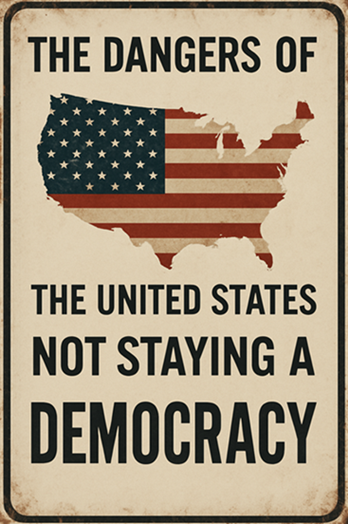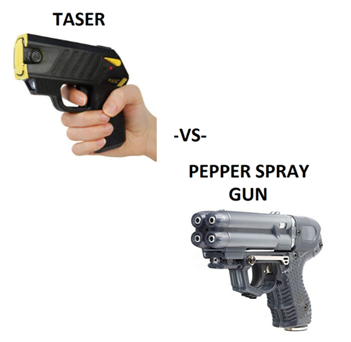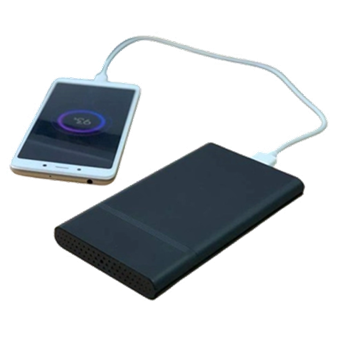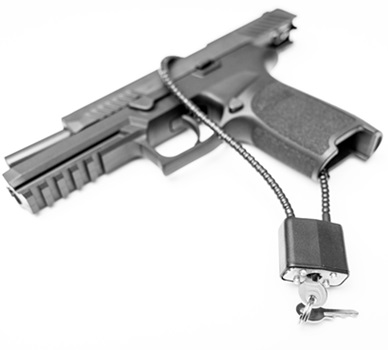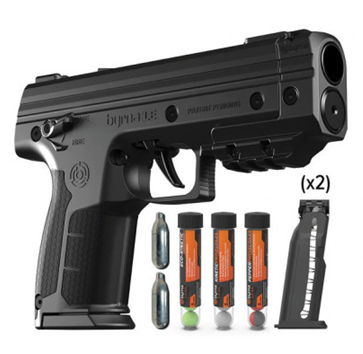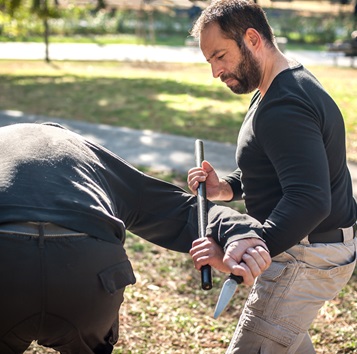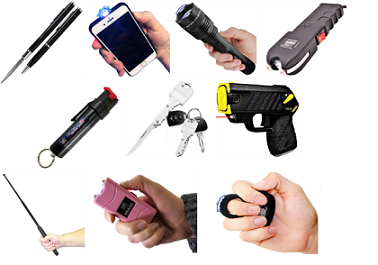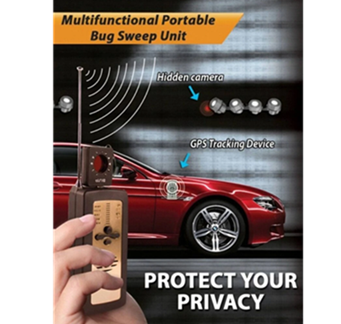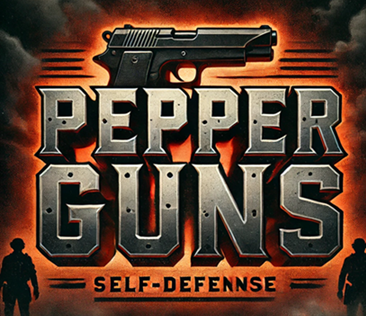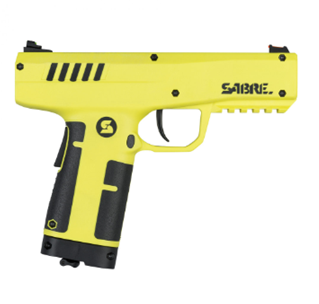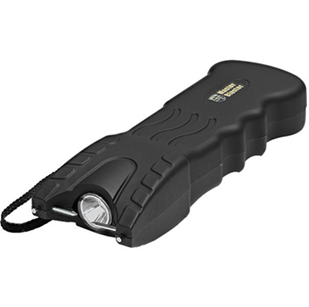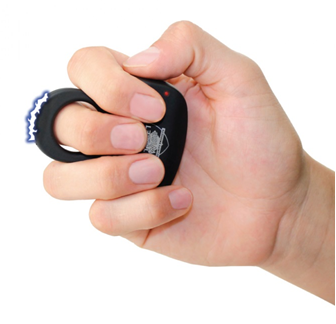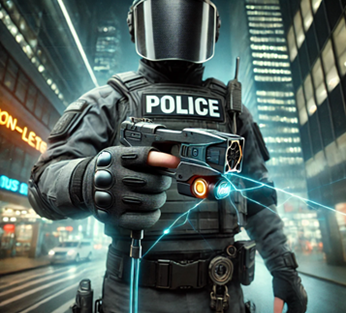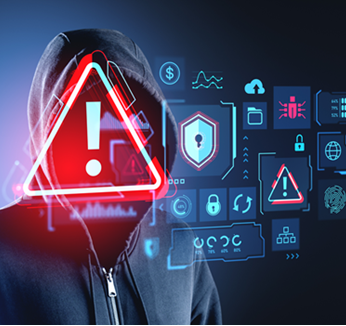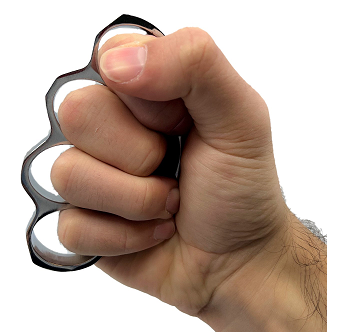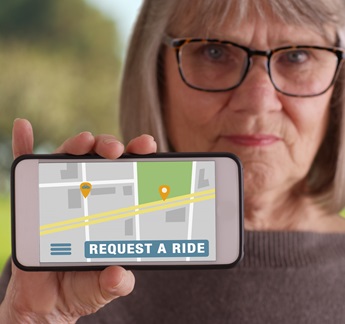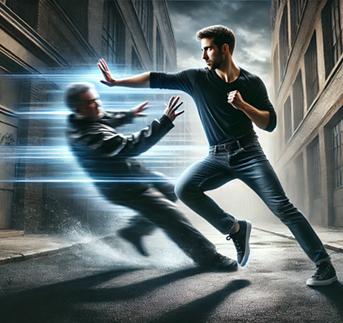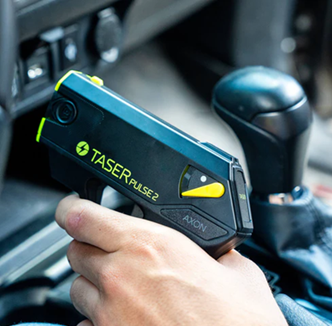The Rise of Non-Lethal Weapons in Policing: Are They Truly Safe?
 As public scrutiny of law enforcement practices continues to grow, the demand for non-lethal alternatives to firearms has surged. Non-lethal weapons (NLWs), such as Tasers, rubber bullets, pepper spray, and stun grenades, are increasingly used by police departments worldwide to subdue suspects while reducing the risk of fatal encounters. But while these tools are marketed as safer alternatives to lethal force, their deployment has raised significant ethical, legal, and medical concerns.
As public scrutiny of law enforcement practices continues to grow, the demand for non-lethal alternatives to firearms has surged. Non-lethal weapons (NLWs), such as Tasers, rubber bullets, pepper spray, and stun grenades, are increasingly used by police departments worldwide to subdue suspects while reducing the risk of fatal encounters. But while these tools are marketed as safer alternatives to lethal force, their deployment has raised significant ethical, legal, and medical concerns.
This article explores the rise of non-lethal weapons in policing, their effectiveness, and whether they truly provide a safe alternative to traditional firearms.
The Evolution of Non-Lethal Weapons in Law Enforcement
Historically, police forces relied on physical restraint techniques, batons, and hand-to-hand combat to subdue suspects. However, these methods often led to serious injuries for both officers and civilians. As technology advanced, law enforcement agencies turned to NLWs, aiming to minimize harm while maintaining control over potentially dangerous situations.
Some of the most widely used non-lethal weapons today include:
- Tasers: Electric shock devices designed to temporarily incapacitate suspects by disrupting their neuromuscular functions.
- Rubber Bullets: Projectiles meant to cause pain and compliance without penetrating the skin.
- Pepper Spray: An inflammatory agent that irritates the eyes and respiratory system, temporarily incapacitating individuals.
- BolaWrap: A device that shoots a Kevlar cord around a suspect’s limbs, restricting movement without causing injury.
- Sonic and Directed Energy Weapons: High-frequency sound waves and heat-inducing lasers designed for crowd control.
The Good, Bad, and Ugly of A.I. Today and in the Future
 Artificial Intelligence (AI) has evolved from a speculative concept in science fiction to a transformative force reshaping industries, societies, and daily life. From diagnosing diseases to powering autonomous vehicles, AI’s capabilities are expanding at an unprecedented pace. Yet, its rise is accompanied by ethical dilemmas, socioeconomic disruptions, and existential risks. This article explores the multifaceted impact of AI, examining its benefits (the good), challenges (the bad), and existential threats (the ugly) in the present and future.
Artificial Intelligence (AI) has evolved from a speculative concept in science fiction to a transformative force reshaping industries, societies, and daily life. From diagnosing diseases to powering autonomous vehicles, AI’s capabilities are expanding at an unprecedented pace. Yet, its rise is accompanied by ethical dilemmas, socioeconomic disruptions, and existential risks. This article explores the multifaceted impact of AI, examining its benefits (the good), challenges (the bad), and existential threats (the ugly) in the present and future.
The Good of AI
AI Today: Advancements Enhancing Human Life
-
Revolutionizing Healthcare
AI is already saving lives. Machine learning algorithms analyze medical images with precision, detecting cancers earlier than human radiologists. For instance, Google’s DeepMind developed an AI system that identifies breast cancer in mammograms with 94% accuracy, reducing false positives by 5.7%. Similarly, IBM Watson aids oncologists by cross-referencing patient data with millions of research papers to recommend personalized treatments.During the COVID-19 pandemic, AI accelerated drug discovery, with tools like AlphaFold predicting protein structures to expedite vaccine development. AI-powered chatbots also triaged patients, alleviating pressure on healthcare systems.
Protecting Yourself from Online Threats: Digital Self-Defense Tips
 In today’s digital age, we rely on the internet for nearly every aspect of our lives: communication, banking, shopping, socializing, and working. While the internet offers countless benefits, it also presents numerous threats. Cybercrime, identity theft, phishing, data breaches, and malware are just a few of the dangers lurking online. Just as we take precautions to protect ourselves in the physical world, it’s essential to apply similar measures for self-defense in the digital world.
In today’s digital age, we rely on the internet for nearly every aspect of our lives: communication, banking, shopping, socializing, and working. While the internet offers countless benefits, it also presents numerous threats. Cybercrime, identity theft, phishing, data breaches, and malware are just a few of the dangers lurking online. Just as we take precautions to protect ourselves in the physical world, it’s essential to apply similar measures for self-defense in the digital world.
Digital self-defense isn't just for tech experts. Everyone who uses the internet needs to know how to safeguard their personal information, maintain their privacy, and avoid malicious attacks. In this post, we’ll explore various online threats and provide actionable tips on how to protect yourself from them. Whether you’re browsing the web, using social media, shopping online, or managing sensitive information, you can take proactive steps to defend yourself against online dangers.
Understanding the Threats
Before we dive into the tips for digital self-defense, it’s important to understand the types of threats you may encounter online. The most common online threats include:
-
Phishing Attacks
Phishing is one of the most common forms of cybercrime. Phishing attacks often come in the form of fraudulent emails, messages, or websites that trick users into revealing sensitive information such as passwords, credit card details, or social security numbers. The attacker may pose as a trusted entity, such as a bank, government agency, or popular company, to gain your trust.
The BolaWrap: A Non-Lethal Restraint Device Explained
 In recent years, law enforcement agencies and security professionals have been looking for new ways to safely and effectively restrain individuals without resorting to lethal force. One such tool that has gained attention is the BolaWrap, a non-lethal device designed to subdue subjects without causing serious injury. But what exactly is the BolaWrap? How does it work? What are its advantages and drawbacks? And who can legally obtain and use it? This article provides a comprehensive look at the BolaWrap, detailing everything you need to know about this innovative tool.
In recent years, law enforcement agencies and security professionals have been looking for new ways to safely and effectively restrain individuals without resorting to lethal force. One such tool that has gained attention is the BolaWrap, a non-lethal device designed to subdue subjects without causing serious injury. But what exactly is the BolaWrap? How does it work? What are its advantages and drawbacks? And who can legally obtain and use it? This article provides a comprehensive look at the BolaWrap, detailing everything you need to know about this innovative tool.
What Is the BolaWrap?
The BolaWrap is a handheld, non-lethal restraint device developed by Wrap Technologies. It is designed to help law enforcement officers and security personnel control non-compliant individuals safely. The device fires a Kevlar cord that wraps around a person's arms or legs, restricting their movement and allowing officers to gain control without resorting to physical force, tasers, or firearms.
Unlike other restraint tools such as tasers or pepper spray, which rely on pain compliance, the BolaWrap does not inflict pain or injury upon the target. Instead, it uses mechanical restraint to prevent movement, making it an ideal option for situations where minimizing harm is a priority.
Why You Should Train Before Carrying Brass Knuckles
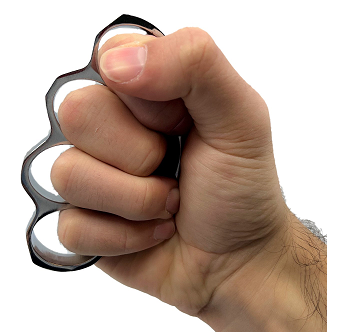 Brass knuckles are often seen as a powerful self-defense tool due to their compact design and devastating impact. However, while they may appear easy to use, carrying and using brass knuckles without proper training can lead to unintended consequences, including self-injury, legal trouble, and ineffective defense. Training in their proper use ensures that you maximize their effectiveness while minimizing risks. In this article, we will explore the importance of training before carrying brass knuckles, covering safety, legality, technique, and responsible self-defense practices.
Brass knuckles are often seen as a powerful self-defense tool due to their compact design and devastating impact. However, while they may appear easy to use, carrying and using brass knuckles without proper training can lead to unintended consequences, including self-injury, legal trouble, and ineffective defense. Training in their proper use ensures that you maximize their effectiveness while minimizing risks. In this article, we will explore the importance of training before carrying brass knuckles, covering safety, legality, technique, and responsible self-defense practices.
Understanding Brass Knuckles: More Than Just a Metal Fist
Brass knuckles, also known as knuckle dusters, are designed to reinforce the user's punch by concentrating force into a smaller area. This increases the impact of a strike, making them a potent tool for self-defense. However, they also come with significant drawbacks, particularly if wielded without training:
-
Risk of Self-Injury: Without proper technique, a user can easily break their own fingers or wrist upon impact.
-
Legal Complications: Laws regarding brass knuckles vary widely, and using them incorrectly can land you in legal trouble.
-
False Sense of Security: Simply carrying brass knuckles does not guarantee effective self-defense.
Training helps address these issues by teaching users proper handling techniques, improving reaction time, and developing strategic defensive skills.
The Importance of Training Before Carrying Brass Knuckles
1. Preventing Self-Injury
One of the biggest risks of using brass knuckles without training is the potential for self-injury. Unlike a bare-fisted punch, using brass knuckles incorrectly can cause:
What to Do If There Is a Cyber Attack Against Your Home Network
 In today's digital age, your home network is just as valuable as your physical property. A cyber attack on your home network can compromise your personal information, financial data, and even your connected devices. Whether it's malware, ransomware, phishing, or unauthorized access, knowing how to respond quickly and effectively can mitigate damage and prevent future attacks. This guide will walk you through the steps to take if you suspect your home network is under attack and how to protect yourself from future threats.
In today's digital age, your home network is just as valuable as your physical property. A cyber attack on your home network can compromise your personal information, financial data, and even your connected devices. Whether it's malware, ransomware, phishing, or unauthorized access, knowing how to respond quickly and effectively can mitigate damage and prevent future attacks. This guide will walk you through the steps to take if you suspect your home network is under attack and how to protect yourself from future threats.
Recognizing the Signs of a Cyber Attack
Before taking action, you need to determine whether your home network has been compromised. Here are some common signs:
-
Unusual Network Activity: If your internet slows down significantly without explanation, it could indicate unauthorized users consuming bandwidth.
-
Unrecognized Devices on Your Network: Check your router’s admin panel to see if there are any unknown devices connected.
-
Unauthorized Transactions: If you notice unfamiliar financial transactions, your network or devices might be compromised.
-
Pop-ups and Redirects: If your devices start displaying unexpected pop-ups or redirecting to unfamiliar websites, malware may be present.
-
Locked Files or Ransom Messages: If files suddenly become inaccessible and you receive a ransom demand, your system has likely been hit by ransomware.
-
Passwords Stop Working: If you suddenly can’t log in to accounts that should be accessible, someone may have hijacked them.
Debunking Common Misconceptions about TASERs
 In today’s charged climate of public safety debates, TASER energy weapons (TEWs) often spark confusion. Are they dangerous? Do they cause permanent harm? Can they replace firearms? Let’s cut through the noise and explore the science, stats, and stories behind these devices—tools credited with saving over 300,000 lives and deployed 5+ million times globally.
In today’s charged climate of public safety debates, TASER energy weapons (TEWs) often spark confusion. Are they dangerous? Do they cause permanent harm? Can they replace firearms? Let’s cut through the noise and explore the science, stats, and stories behind these devices—tools credited with saving over 300,000 lives and deployed 5+ million times globally.
Myth-Busting 101: The TASER Lowdown
Myth #1: “TASERs Are Just Like Stun Guns”
Reality Check: Think Apples vs. Oranges
Stun guns are contact-based pain devices, while TASERs are projectile tools that disrupt muscle control. Imagine a stun gun as a handheld “zapper” that requires you to press it against an attacker. A TASER, meanwhile, shoots probes up to 15 feet, overrides the nervous system, and drops a threat in seconds. Hollywood loves to blur this line, but in reality, TASERs are in a league of their own.
Myth #2: “High Voltage = High Danger”
Reality Check: Voltage Isn’t the Villain
Yes, TASERs pack up to 50,000 volts—enough to arc through thick clothing. But voltage alone isn’t harmful. It’s the current (amps) that kills. A TASER’s current is microscopic (1-2 milliamps), comparable to the buzz of a smartphone charger. For context, a toaster uses 1,000x more current. TASERs use high voltage to reach targets but low current to ensure safety.
The Ultimate Guide to Ride-Sharing Safety: Staying Secure with Uber & Lyft
 Ride-sharing services like Uber and Lyft have transformed transportation, offering a convenient and accessible way to travel at the tap of a button. However, while these services provide a safer alternative to traditional taxis or public transit in many situations, they also come with risks. Taking proactive steps to ensure your safety can help you enjoy a secure ride every time. This comprehensive guide outlines essential safety precautions before, during, and after your ride.
Ride-sharing services like Uber and Lyft have transformed transportation, offering a convenient and accessible way to travel at the tap of a button. However, while these services provide a safer alternative to traditional taxis or public transit in many situations, they also come with risks. Taking proactive steps to ensure your safety can help you enjoy a secure ride every time. This comprehensive guide outlines essential safety precautions before, during, and after your ride.
1. Before You Request a Ride: Preparation is Key
Safety starts before you even open the ride-sharing app. Careful planning can significantly reduce your risk.
- Plan Your Route: Familiarize yourself with your destination and the expected route beforehand. If the driver deviates significantly, address your concerns immediately.
- Check Surge Pricing: While not a direct safety concern, extreme surge pricing can indicate unusual circumstances. Consider waiting or using an alternative mode of transportation.
- Trust Your Instincts: If you feel uneasy about requesting a ride in a particular area or at a specific time, trust your gut and wait for a safer moment.
- Download and Familiarize Yourself with Safety Features: Uber and Lyft offer emergency buttons, trip-sharing features, and in-app support. Learn how to use these tools before you need them.
- Ensure Your Phone is Charged: A fully charged phone ensures you can contact help if needed. Carry a portable charger as a backup.
How to Defend Yourself Without a Weapon
 Defending yourself without a weapon is an essential skill that can help you stay safe in a variety of situations. Whether you are walking alone at night, facing a potential mugger, or dealing with an aggressive individual, knowing how to protect yourself without relying on weapons can be invaluable. This guide will provide practical strategies for self-defense, focusing on awareness, de-escalation, and physical techniques that can help you avoid or neutralize a threat.
Defending yourself without a weapon is an essential skill that can help you stay safe in a variety of situations. Whether you are walking alone at night, facing a potential mugger, or dealing with an aggressive individual, knowing how to protect yourself without relying on weapons can be invaluable. This guide will provide practical strategies for self-defense, focusing on awareness, de-escalation, and physical techniques that can help you avoid or neutralize a threat.
1. The Importance of Situational Awareness
One of the best ways to defend yourself is to avoid dangerous situations altogether. Situational awareness involves being alert to your surroundings and recognizing potential threats before they escalate. Here are some key tips:
-
Stay alert in unfamiliar or isolated areas. Keep your head up and scan your environment.
-
Avoid distractions like your phone or headphones. These can make you an easy target.
-
Trust your instincts. If something feels off, leave the area immediately.
-
Identify exits and safe zones. Know where you can run if necessary.
-
Maintain a confident posture. Walk with purpose to deter potential attackers.
How to Safely Use a Taser for Self-Defense: A Guide to the Pulse 2, X1, Bolt 2, and 7CQ
 In today’s world, personal safety is a top priority, and Tasers have emerged as one of the most reliable non-lethal self-defense tools. However, their effectiveness depends on choosing the right model, understanding its mechanics, and mastering safe deployment. This updated guide covers four top-rated Tasers for 2025—the Taser Pulse 2, Taser X1, Taser Bolt 2, and Taser 7CQ—to help you make an informed decision and stay protected.
In today’s world, personal safety is a top priority, and Tasers have emerged as one of the most reliable non-lethal self-defense tools. However, their effectiveness depends on choosing the right model, understanding its mechanics, and mastering safe deployment. This updated guide covers four top-rated Tasers for 2025—the Taser Pulse 2, Taser X1, Taser Bolt 2, and Taser 7CQ—to help you make an informed decision and stay protected.
Understanding Tasers: How They Work
Tasers use compressed nitrogen to fire two barbed probes connected by conductive wires, delivering a high-voltage electrical pulse (50,000 volts) to disrupt an attacker’s neuromuscular system. This causes temporary paralysis, giving you time to escape. Unlike stun guns, Tasers work at a distance (up to 30 feet for some models) and are designed to minimize lethal risk.
Key components include:
-
Cartridge: Holds probes and nitrogen for deployment.
-
Safety switch: Prevents accidental discharge.
-
Contact stun mode: Allows close-range use if probes miss.
How to React If Someone Pulls a Weapon on You
 Encountering someone who has pulled a weapon on you is one of the most terrifying situations you can face. Whether it’s a firearm, knife, or blunt object, your reaction in those critical moments can mean the difference between life and death. Staying calm, assessing the threat, and knowing how to respond strategically are crucial to surviving such an encounter.
Encountering someone who has pulled a weapon on you is one of the most terrifying situations you can face. Whether it’s a firearm, knife, or blunt object, your reaction in those critical moments can mean the difference between life and death. Staying calm, assessing the threat, and knowing how to respond strategically are crucial to surviving such an encounter.
In this comprehensive guide, we will discuss how to react if someone pulls a weapon on you, covering key survival principles, de-escalation techniques, self-defense tactics, and legal considerations.
1. Stay Calm and Assess the Situation
The natural reaction to someone pulling a weapon on you is fear, but panic can cloud your judgment. The first step is to take a deep breath and assess the situation rationally. Consider the following:
-
What kind of weapon are they holding? (Gun, knife, bat, etc.)
-
What is their intent? (Robbery, intimidation, random attack, personal vendetta?)
-
Are they close enough to reach you physically?
-
Do they seem rational or erratic? (Drunk, on drugs, or agitated?)
-
Are there bystanders who could intervene or call for help?
Stun Guns 101: How Voltage and Amperage Impact Effectiveness
 When it comes to self-defense, stun guns are a popular choice due to their ability to incapacitate an attacker without causing permanent harm. However, understanding the key electrical components of a stun gun—voltage and amperage—is essential to choosing the right device for your needs. Many people assume that higher voltage means more effectiveness, but amperage plays a crucial role in a stun gun's stopping power. In this comprehensive guide, we will break down how voltage and amperage impact the effectiveness of stun guns and what you should look for when selecting one.
When it comes to self-defense, stun guns are a popular choice due to their ability to incapacitate an attacker without causing permanent harm. However, understanding the key electrical components of a stun gun—voltage and amperage—is essential to choosing the right device for your needs. Many people assume that higher voltage means more effectiveness, but amperage plays a crucial role in a stun gun's stopping power. In this comprehensive guide, we will break down how voltage and amperage impact the effectiveness of stun guns and what you should look for when selecting one.
Understanding Voltage in Stun Guns
Voltage is a measure of electrical potential, or the force that drives the electric current through the body of an attacker. In stun guns, voltage typically ranges from a few thousand volts to several million volts. Manufacturers often advertise high-voltage stun guns, sometimes exceeding 50 million volts, but does higher voltage really make a difference?
Does Higher Voltage Mean a More Powerful Stun Gun?
Not necessarily. While higher voltage allows the stun gun to penetrate thick clothing and reach the skin, it does not directly correlate with effectiveness. A stun gun with extremely high voltage but low amperage may create an intimidating spark and a loud crackling sound, but it won’t necessarily deliver a more incapacitating shock.
Voltage and Penetration
-
Low voltage (below 100,000V): May struggle to penetrate thick clothing but can still be effective on bare skin.
-
Medium voltage (100,000V - 1 million V): Capable of penetrating light clothing and delivering a shock to the skin.
How Pepper Spray Helped Stop an Assault in Vero Beach Florida
 In a recent incident in Vero Beach, Florida, a man named Mercado was arrested after causing a chaotic scene that endangered those around him. According to reports, Mercado engaged in aggressive behavior, including punching a car, slapping a woman, and yelling, "lock me up." His violent actions created an immediate threat to those present. In response, the victim’s mother took decisive action to protect her daughter by using pepper spray to subdue Mercado.
In a recent incident in Vero Beach, Florida, a man named Mercado was arrested after causing a chaotic scene that endangered those around him. According to reports, Mercado engaged in aggressive behavior, including punching a car, slapping a woman, and yelling, "lock me up." His violent actions created an immediate threat to those present. In response, the victim’s mother took decisive action to protect her daughter by using pepper spray to subdue Mercado.
This case serves as a stark reminder of the importance of self-defense tools like pepper spray and their role in personal safety. In this blog post, we’ll analyze how pepper spray played a critical role in stopping the assailant, explore its effectiveness in self-defense situations, and discuss the legal and practical considerations of carrying it.
Understanding Pepper Spray and Its Effects
Pepper spray is one of the most widely used non-lethal self-defense tools available today. It contains oleoresin capsicum (OC), a concentrated extract derived from chili peppers. When sprayed on an attacker, OC immediately causes an intense burning sensation in the eyes, nose, and throat, leading to temporary blindness, severe irritation, coughing, and disorientation. These effects typically last between 15 to 45 minutes, giving the victim enough time to escape or seek help.
The effectiveness of pepper spray lies in its ability to incapacitate an aggressor without causing permanent harm. Unlike other self-defense tools such as tasers or firearms, pepper spray does not rely on physical strength or extensive training to be effective. A simple spray aimed at the attacker’s face can quickly neutralize the threat, making it an ideal tool for individuals of all ages and physical abilities.
Woman Cited for Bringing Stun Gun on Plane at BWI
 In a recent incident at Baltimore/Washington International Thurgood Marshall Airport (BWI), a woman from McSherrystown, Pennsylvania, was cited for attempting to bring a disguised stun gun onto a plane (see picture below). The Transportation Security Administration (TSA) officer detected the pink stun gun, designed to resemble a cell phone with a fake keypad and screen, during an X-ray screening of her carry-on bag. The device featured two buttons labeled "light" and "stun." Following the discovery, Maryland Transportation Authority Police issued the woman a state weapons charge citation, after which she was allowed to continue her flight to Los Angeles.
In a recent incident at Baltimore/Washington International Thurgood Marshall Airport (BWI), a woman from McSherrystown, Pennsylvania, was cited for attempting to bring a disguised stun gun onto a plane (see picture below). The Transportation Security Administration (TSA) officer detected the pink stun gun, designed to resemble a cell phone with a fake keypad and screen, during an X-ray screening of her carry-on bag. The device featured two buttons labeled "light" and "stun." Following the discovery, Maryland Transportation Authority Police issued the woman a state weapons charge citation, after which she was allowed to continue her flight to Los Angeles.
TSA Regulations on Stun Guns
This event underscores the importance of understanding the regulations surrounding self-defense tools, especially when traveling. Stun guns, while legal in many jurisdictions, are prohibited in carry-on luggage on commercial flights. The TSA's "What Can I Bring?" guidelines clearly state that electroshock weapons, including stun guns, are not permitted in carry-on bags but may be transported in checked luggage if they are legally owned and the airline's policies allow it.
A Discreet Self-Defense Option
For individuals seeking discreet self-defense options, products like the Cell Phone Stun Gun available at Stunster.com offer a practical solution. This device delivers 12,000,000 volts and 4.9 milliamps of stopping power, all concealed within a design that closely mimics popular smartphone models. Its realistic appearance ensures it remains unnoticed until needed, providing an element of surprise in self-defense situations. (Read The Pros and Cons of Owning a Cellphone Stun Gun for Personal Protection.)
Introducing the Discreet Streetwise Hair Fryer Brush Stun Gun
 In today’s world, personal safety is a top priority. Whether you’re walking alone at night, traveling, or simply want an extra layer of protection, having a reliable self-defense tool can provide peace of mind. However, not everyone feels comfortable carrying traditional self-defense weapons like pepper spray, knives, or standard stun guns. That’s where the Streetwise Hair Fryer Brush Stun Gun comes in—a powerful, discreet, and innovative self-defense device designed to keep you safe without drawing attention.
In today’s world, personal safety is a top priority. Whether you’re walking alone at night, traveling, or simply want an extra layer of protection, having a reliable self-defense tool can provide peace of mind. However, not everyone feels comfortable carrying traditional self-defense weapons like pepper spray, knives, or standard stun guns. That’s where the Streetwise Hair Fryer Brush Stun Gun comes in—a powerful, discreet, and innovative self-defense device designed to keep you safe without drawing attention.
What is the Streetwise Hair Fryer Brush Stun Gun?
The Streetwise Hair Fryer Brush Stun Gun is a groundbreaking self-defense tool disguised as a common household item—a hairbrush. This clever design allows you to carry a powerful stun gun in plain sight, ensuring that you are always prepared without raising suspicion. Whether in your purse, car, or luggage, this stun gun blends seamlessly into everyday life, making it a perfect choice for those who prioritize both security and discretion.
Unlike conventional stun guns, which can be bulky and obvious, the Hair Fryer Brush Stun Gun offers a covert yet highly effective means of self-defense. It provides a high-voltage shock that incapacitates attackers, giving you the critical seconds needed to escape and seek help.
Key Features and Benefits
1. Discreet and Stylish Design
One of the standout features of the Hair Fryer Brush Stun Gun is its deceptive appearance. It looks just like an ordinary hairbrush, making it an ideal option for those who want protection without alerting potential threats. Attackers are unlikely to recognize it as a self-defense weapon, giving you the element of surprise.
Streetwise Tactical Stunbrella Review – The Ultimate Discreet Self-Defense Umbrella
 The Streetwise Tactical Stunbrella is a groundbreaking self-defense tool that ingeniously combines the practicality of a fully functional umbrella with the protective power of a high-voltage stun device. This innovative product offers discreet personal security, allowing users to carry a potent self-defense mechanism without drawing unwanted attention.
The Streetwise Tactical Stunbrella is a groundbreaking self-defense tool that ingeniously combines the practicality of a fully functional umbrella with the protective power of a high-voltage stun device. This innovative product offers discreet personal security, allowing users to carry a potent self-defense mechanism without drawing unwanted attention.
Design and Functionality
At first glance, the Stunbrella appears to be a standard umbrella, featuring a durable, wind-resistant canopy that provides reliable protection against the elements. Its sturdy construction ensures it can withstand harsh weather conditions, making it a dependable companion for daily use. The umbrella measures 40 inches in length, offering an extended reach that keeps potential threats at a safe distance.
The true innovation lies within its discreet self-defense capabilities. The Stunbrella is equipped with a powerful stun feature that delivers a high-voltage electric charge designed to incapacitate attackers instantly. Notably, this stun function remains fully operational whether the umbrella is open or closed and even functions safely in wet conditions, ensuring readiness in any situation.
The device boasts a large shock area, enhancing its effectiveness in deterring potential threats. The stun activation button is intuitively integrated into the grip, allowing for quick and easy deployment when needed. A built-in safety switch, controlled by the thumb, prevents accidental discharge, adding an extra layer of security during handling.
Additional Features
Beyond its primary functions, the Stunbrella offers several features that enhance its utility and user experience:
-
Rubberized Grip: The handle is designed with a sturdy rubberized grip, ensuring a secure hold even in adverse weather conditions.
How to Protect Your House Against Wildfires
 Wildfires have become a growing threat, particularly in regions like California, where dry conditions, high winds, and rising temperatures create the perfect conditions for devastating blazes. While some factors contributing to wildfires are beyond individual control, homeowners can take numerous proactive steps to safeguard their properties and increase their chances of survival. This guide will walk you through the most effective strategies to protect your home from wildfires, ranging from landscaping techniques to structural improvements and emergency preparedness plans.
Wildfires have become a growing threat, particularly in regions like California, where dry conditions, high winds, and rising temperatures create the perfect conditions for devastating blazes. While some factors contributing to wildfires are beyond individual control, homeowners can take numerous proactive steps to safeguard their properties and increase their chances of survival. This guide will walk you through the most effective strategies to protect your home from wildfires, ranging from landscaping techniques to structural improvements and emergency preparedness plans.
Understanding Wildfire Risk
Before taking action, it's important to understand how wildfires spread and why some homes are more vulnerable than others. Wildfires spread through three primary mechanisms:
-
Embers: Burning debris can travel miles ahead of the main fire, igniting structures, vegetation, and other flammable materials.
-
Direct Flames: If flammable materials like wood decks or overgrown vegetation are close to your home, direct flames can quickly engulf the structure.
-
Radiant Heat: Extreme heat from nearby fires can cause materials to combust, even if flames never touch them.
By recognizing these risks, you can take appropriate steps to create defensible spaces and harden your home against fire threats.
Can You Get Arrested for Carrying Pepper Spray?
 Pepper spray is one of the most popular self-defense tools available today. Compact, affordable, and easy to use, it provides individuals with a non-lethal way to protect themselves from potential threats. However, the legality of carrying pepper spray varies across different jurisdictions, and failing to understand the law can lead to legal consequences. So, can you get arrested for carrying pepper spray? The answer depends on where you are, how you use it, and whether you comply with state and local regulations.
Pepper spray is one of the most popular self-defense tools available today. Compact, affordable, and easy to use, it provides individuals with a non-lethal way to protect themselves from potential threats. However, the legality of carrying pepper spray varies across different jurisdictions, and failing to understand the law can lead to legal consequences. So, can you get arrested for carrying pepper spray? The answer depends on where you are, how you use it, and whether you comply with state and local regulations.
Understanding Pepper Spray Laws
Pepper spray laws vary widely across countries and even within states in the U.S. Some areas allow unrestricted possession, while others have strict rules about carrying, purchasing, and using pepper spray.
Federal Law on Pepper Spray
In the United States, pepper spray is generally considered a non-lethal self-defense weapon. There are no federal laws banning its possession for civilians, but there are regulations concerning its shipment across state lines. The U.S. Postal Service restricts the mailing of pepper spray, and some states have their own shipping limitations.
While the federal government does not prohibit carrying pepper spray, it does enforce certain rules when it comes to air travel. The Transportation Security Administration (TSA) allows passengers to carry one 4-ounce container of pepper spray in checked luggage, provided it has a safety mechanism to prevent accidental discharge. However, carrying pepper spray in carry-on luggage is strictly prohibited.
Can You Get Arrested for Carrying a Stun Gun?
 Yes, you can be arrested for carrying a stun gun if you violate federal, state, or local laws (see TASER® and Stun Devices Regulations by State). Here are some situations where carrying a stun gun could lead to legal trouble:
Yes, you can be arrested for carrying a stun gun if you violate federal, state, or local laws (see TASER® and Stun Devices Regulations by State). Here are some situations where carrying a stun gun could lead to legal trouble:
1. Carrying a Stun Gun in a Restricted State or City
If you carry a stun gun in a state where it is illegal, you could face criminal charges, fines, or even jail time. In states like Rhode Island and Hawaii, stun guns are completely banned, meaning possession alone is a criminal offense.
2. Carrying a Stun Gun in Prohibited Locations
Even in states where stun guns are legal, carrying them in certain locations can lead to arrest. Common restricted areas include:
-
Airports (violating TSA regulations)
-
Schools (including K-12 campuses and certain college properties)
-
Government buildings
-
Courthouses
-
Military bases
If caught with a stun gun in one of these places, you may be charged with unlawful possession of a weapon.
The Top 10 Causes of Injuries and Deaths in America
 In the United States, injuries and deaths are significant public health concerns that impact millions of individuals and families each year. Understanding the leading causes of both injuries and deaths can help us take proactive steps to prevent them, improve safety, and promote healthier lifestyles. In this blog post, we’ll explore the top 10 causes of injuries and the top 10 causes of death in America, providing insights into why these issues are so prevalent and what can be done to address them.
In the United States, injuries and deaths are significant public health concerns that impact millions of individuals and families each year. Understanding the leading causes of both injuries and deaths can help us take proactive steps to prevent them, improve safety, and promote healthier lifestyles. In this blog post, we’ll explore the top 10 causes of injuries and the top 10 causes of death in America, providing insights into why these issues are so prevalent and what can be done to address them.
Top 10 Causes of Injuries in America
Injuries are a leading cause of disability and can have long-term physical, emotional, and financial consequences. According to the Centers for Disease Control and Prevention (CDC) and other health organizations, the following are the most common causes of non-fatal injuries in the U.S.:
1. Falls
-
Why It’s a Leading Cause: Falls are the most common cause of non-fatal injuries, particularly among older adults and young children. Slippery surfaces, uneven flooring, and lack of proper safety equipment contribute to these incidents.
-
Common Injuries: Fractures, sprains, and head injuries.
-
Prevention Tips: Install grab bars in bathrooms, use non-slip mats, ensure proper lighting, and encourage regular exercise to improve balance and strength.
Surviving a Kidnapping: Essential Steps to Stay Safe, Escape, and Recover
 Kidnapping is a terrifying and life-threatening situation that no one ever expects to face. However, being prepared and knowing how to respond can significantly increase your chances of survival and safe return. This blog post will provide a comprehensive guide on what to do if you are kidnapped, covering everything from immediate actions to long-term strategies for survival and escape.
Kidnapping is a terrifying and life-threatening situation that no one ever expects to face. However, being prepared and knowing how to respond can significantly increase your chances of survival and safe return. This blog post will provide a comprehensive guide on what to do if you are kidnapped, covering everything from immediate actions to long-term strategies for survival and escape.
Understanding Kidnapping
Before diving into the specifics of what to do if you are kidnapped, it's essential to understand what kidnapping entails. Kidnapping is the unlawful abduction and confinement of a person against their will, often for ransom, political leverage, or other malicious purposes. It can happen to anyone, anywhere, and at any time, although certain individuals may be at higher risk due to their profession, wealth, or public profile.
Immediate Actions
-
Stay Calm: The first and most crucial step is to remain as calm as possible. Panicking can cloud your judgment and lead to poor decision-making. Take deep breaths and try to assess your situation objectively.
-
Assess Your Surroundings: Quickly take stock of your environment. Note any landmarks, sounds, or other details that could help authorities locate you later. Pay attention to the number of kidnappers, their appearance, and any weapons they may have.
Should I Purchase a Gun for My Home?
 The decision to purchase a gun for home defense is one of the most polarizing and deeply personal choices a person can make. It involves weighing complex factors such as personal safety, legal responsibilities, moral considerations, and the potential risks associated with gun ownership. In this blog post, we’ll explore the pros and cons of owning a gun for home protection, examine the statistics and realities of gun use in self-defense, and provide guidance to help you make an informed decision.
The decision to purchase a gun for home defense is one of the most polarizing and deeply personal choices a person can make. It involves weighing complex factors such as personal safety, legal responsibilities, moral considerations, and the potential risks associated with gun ownership. In this blog post, we’ll explore the pros and cons of owning a gun for home protection, examine the statistics and realities of gun use in self-defense, and provide guidance to help you make an informed decision.
Introduction: The Debate Over Gun Ownership
Guns are a deeply ingrained part of American culture, with approximately 40% of U.S. households reporting gun ownership. For many, owning a firearm is seen as a fundamental right and a practical means of protecting themselves and their families. For others, the risks associated with guns—accidental shootings, suicides, and the potential for escalation during conflicts—outweigh the perceived benefits.
The question of whether to purchase a gun for your home is not one that can be answered with a simple “yes” or “no.” It requires careful consideration of your personal circumstances, values, and the specific risks you face. Let’s dive into the key factors to consider.
The Case for Owning a Gun for Home Defense
1. Personal Protection
The primary reason most people consider purchasing a gun is for self-defense. The idea of being able to protect yourself and your loved ones in the event of a home invasion or violent attack is a powerful motivator. Proponents of gun ownership argue that having a firearm can level the playing field, especially for individuals who may be physically vulnerable, such as the elderly or those living alone.
The Dangers of Carrying a Lethal Weapon in Public
 In an age where personal safety is a growing concern, many individuals are turning to lethal weapons for protection. Whether it’s a firearm, knife, or another deadly device, the idea of carrying a lethal weapon can seem like a logical way to deter potential threats. However, the reality of carrying such weapons in public is far more complex and fraught with dangers that can outweigh the perceived benefits. In this blog post, we’ll explore the multifaceted risks associated with carrying a lethal weapon in public, including legal, psychological, and societal implications, as well as alternatives that can help ensure safety without escalating risks.
In an age where personal safety is a growing concern, many individuals are turning to lethal weapons for protection. Whether it’s a firearm, knife, or another deadly device, the idea of carrying a lethal weapon can seem like a logical way to deter potential threats. However, the reality of carrying such weapons in public is far more complex and fraught with dangers that can outweigh the perceived benefits. In this blog post, we’ll explore the multifaceted risks associated with carrying a lethal weapon in public, including legal, psychological, and societal implications, as well as alternatives that can help ensure safety without escalating risks.
Legal Risks and Responsibilities
Carrying a lethal weapon comes with significant legal responsibilities and risks. Laws governing the possession and use of weapons vary widely by jurisdiction, and misunderstanding or violating these laws can lead to severe consequences. For example:
-
Licensing and Permits: Many jurisdictions require permits to carry firearms or other lethal weapons. Failing to obtain the necessary documentation can result in criminal charges.
-
Self-Defense Laws: The legal concept of self-defense is not universal. While some areas recognize "stand your ground" laws, others require individuals to retreat before using lethal force. Misinterpreting these laws can lead to criminal prosecution, even if the weapon was used in a perceived self-defense situation.
-
Civil Liability: Even if no criminal charges are filed, individuals who use lethal weapons in public may face civil lawsuits. Victims or their families can sue for damages, leading to financial and emotional burdens.
The Good, Bad, and Ugly About Non-Lethal Weapons vs. Lethal Weapons
 When it comes to personal safety, the debate between non-lethal and lethal weapons is often polarizing. Each has its advantages, drawbacks, and ethical considerations. Whether you're a civilian looking for self-defense tools or a professional in law enforcement, understanding the nuances can help you make an informed decision. This article explores the good, the bad, and the ugly of non-lethal and lethal weapons, highlighting their roles in self-defense, law enforcement, and beyond.
When it comes to personal safety, the debate between non-lethal and lethal weapons is often polarizing. Each has its advantages, drawbacks, and ethical considerations. Whether you're a civilian looking for self-defense tools or a professional in law enforcement, understanding the nuances can help you make an informed decision. This article explores the good, the bad, and the ugly of non-lethal and lethal weapons, highlighting their roles in self-defense, law enforcement, and beyond.
The Good: Advantages of Non-Lethal Weapons
1. Reduced Risk of Fatality
The primary advantage of non-lethal weapons is their ability to incapacitate without causing permanent harm. Devices like steel batons, stun guns, tasers, pepper sprays, and personal alarms are designed to neutralize threats while minimizing the risk of death or severe injury. This makes them ideal for situations where preserving life is a priority.
2. Legal Accessibility
In many jurisdictions, non-lethal weapons are easier to acquire and carry than firearms. For instance, pepper sprays and personal alarms often require minimal paperwork and are legal in most areas. This accessibility makes them a popular choice for civilians.
3. User-Friendly
Non-lethal weapons are typically easier to use than firearms. A stun gun, for example, requires minimal training compared to the proficiency needed to handle a firearm safely and effectively. This simplicity is particularly appealing for individuals new to self-defense.
How to Defend Yourself Against a Pepper Spray Attack
 Pepper spray is a commonly used self-defense tool due to its accessibility and effectiveness. While its purpose is to incapacitate an attacker, there are instances where it might be used maliciously. Knowing how to defend yourself against a pepper spray attack can make a significant difference in your safety and ability to respond effectively.
Pepper spray is a commonly used self-defense tool due to its accessibility and effectiveness. While its purpose is to incapacitate an attacker, there are instances where it might be used maliciously. Knowing how to defend yourself against a pepper spray attack can make a significant difference in your safety and ability to respond effectively.
Understanding Pepper Spray
Pepper spray contains oleoresin capsicum (OC), a compound derived from hot peppers. When sprayed, it causes intense burning sensations in the eyes, skin, and respiratory system. Effects include temporary blindness, difficulty breathing, and severe discomfort, typically lasting from 20 minutes to an hour. Understanding these effects is crucial for mitigating their impact and protecting yourself.
Situational Awareness
The best way to defend against any attack is to avoid it altogether. Practicing situational awareness can help you anticipate and evade potential threats. Here are some tips:
-
Stay Alert: Keep your head up and avoid distractions like your phone, especially in unfamiliar or isolated areas.
-
Maintain Distance: If someone seems suspicious or confrontational, create physical distance to reduce the likelihood of being targeted.
-
Observe Body Language: Watch for signs that someone may be preparing to use pepper spray, such as reaching into a pocket or bag.
Review of the Stun Pen 40,000,000 Volts with Flashlight, Battery Meter, and Pocket Clip
 When it comes to personal safety, having a reliable and effective self-defense tool is essential. The Stun Pen 40,000,000 Volts with Flashlight, Battery Meter, and Pocket Clip is a standout product that combines power, practicality, and portability. This review delves into the features, benefits, and reasons why this device is a must-have for anyone seeking to enhance their personal security.
When it comes to personal safety, having a reliable and effective self-defense tool is essential. The Stun Pen 40,000,000 Volts with Flashlight, Battery Meter, and Pocket Clip is a standout product that combines power, practicality, and portability. This review delves into the features, benefits, and reasons why this device is a must-have for anyone seeking to enhance their personal security.
Key Features
High Voltage Output
The Stun Pen delivers a staggering 40,000,000 volts of stopping power, designed to incapacitate potential attackers instantly. This high voltage ensures a strong deterrent, providing users with a crucial advantage in dangerous situations.
Flashlight Functionality
Equipped with an 80-lumen flashlight, this device is more than just a self-defense tool. The flashlight offers ample illumination for navigating dark areas, finding your way in low-light conditions, or signaling for help.
Battery Status Indicator
The LED battery meter is a thoughtful addition, allowing users to monitor the device’s charge level. This ensures that the stun pen is always ready for use when needed, eliminating the risk of unexpected power depletion.
10 Essential Personal Safety Tips Everyone Should Know
 Personal safety is a fundamental concern for everyone, regardless of where you live or what you do. In today’s world, being prepared and aware of your surroundings can make all the difference in avoiding dangerous situations. Below are 10 essential personal safety tips that everyone should know to protect themselves and their loved ones.
Personal safety is a fundamental concern for everyone, regardless of where you live or what you do. In today’s world, being prepared and aware of your surroundings can make all the difference in avoiding dangerous situations. Below are 10 essential personal safety tips that everyone should know to protect themselves and their loved ones.
1. Stay Aware of Your Surroundings
One of the most critical aspects of personal safety is situational awareness. Being mindful of what’s happening around you allows you to identify potential threats before they escalate.
-
How to Practice Situational Awareness:
-
Keep your head up and avoid distractions, such as looking at your phone while walking.
-
Pay attention to exits and entry points in buildings or public spaces.
-
Observe people’s behavior and body language for signs of unusual or suspicious activity.
-
Staying alert can help you make quick decisions and react appropriately to potential dangers.
2. Trust Your Instincts
Your gut feeling is a powerful tool when it comes to personal safety. If something doesn’t feel right, trust your instincts and take action to remove yourself from the situation.
Fox Labs Pepper Sprays: Trusted Self-Defense Solutions
 Fox Labs is renowned for producing some of the most effective and reliable pepper sprays available today. Their products are trusted by law enforcement, military personnel, and civilians alike for personal protection and crowd control. Stunster.com offers a comprehensive selection of Fox Labs pepper sprays, each designed to meet specific needs and preferences.
Fox Labs is renowned for producing some of the most effective and reliable pepper sprays available today. Their products are trusted by law enforcement, military personnel, and civilians alike for personal protection and crowd control. Stunster.com offers a comprehensive selection of Fox Labs pepper sprays, each designed to meet specific needs and preferences.
Fox Labs Five Point Three Pepper Spray
The Fox Labs Five Point Three Pepper Spray formula is Fox Labs' flagship product, delivering a potent 2% Oleoresin Capsicum (OC) solution rated at 5.3 million Scoville Heat Units (SHU). This oil-based spray ensures superior performance and extended range compared to water-based alternatives. It's available in various sizes to suit different applications:
- 1.5 oz: Compact and easy to carry, ideal for personal defense.
- 3 oz: Offers a larger capacity for extended use.
- 12 oz: Suitable for home defense or professional use.
Each canister includes an invisible UV marking dye to aid in suspect identification.
Introducing the Byrna Mission 4 Launcher
 In an era where personal safety is paramount, the Byrna Mission 4 Launcher emerges as a groundbreaking solution for non-lethal self-defense. This state-of-the-art CO₂-powered shoulder-fired launcher is meticulously engineered to provide individuals with a reliable and effective means of protection without resorting to lethal force. Available at Stunster.com, the Byrna Mission 4 is redefining the landscape of personal security.
In an era where personal safety is paramount, the Byrna Mission 4 Launcher emerges as a groundbreaking solution for non-lethal self-defense. This state-of-the-art CO₂-powered shoulder-fired launcher is meticulously engineered to provide individuals with a reliable and effective means of protection without resorting to lethal force. Available at Stunster.com, the Byrna Mission 4 is redefining the landscape of personal security.
Key Features of the Byrna Mission 4 Launcher
-
High-Velocity Performance: The Byrna Mission 4 is capable of firing .68 caliber projectiles at speeds reaching up to 365 feet per second, delivering a kinetic energy of approximately 18.5 joules. This ensures that each shot has the stopping power necessary to deter potential threats effectively.
-
Impressive Capacity: Equipped with an 88-gram CO₂ cylinder, the launcher can discharge up to 60 rounds before requiring a replacement. This high capacity allows users to handle multiple threats or engage in extended training sessions without frequent interruptions.
-
User-Friendly Design: The Byrna Mission 4 features an intuitive design that caters to both seasoned users and newcomers. Its ergonomic build ensures comfortable handling, while the straightforward loading and firing mechanisms make it accessible to individuals of varying experience levels.
-
Customization and Accessories: The launcher boasts multiple Picatinny rails, providing users the flexibility to attach a variety of accessories such as sights, grips, or tactical lights. This adaptability allows for personalization to meet specific defense needs or preferences.
Are Pepper Gel Sprays Better than Traditional Pepper Sprays?
 When it comes to personal safety, pepper sprays have long been a popular choice for non-lethal self-defense. However, recent advancements have introduced a new contender: pepper gel sprays. These innovative self-defense tools promise enhanced safety, accuracy, and effectiveness. But are they really better than traditional pepper sprays? In this comprehensive guide, we’ll compare pepper gel sprays and traditional pepper sprays across various factors to help you decide which one is right for your needs.
When it comes to personal safety, pepper sprays have long been a popular choice for non-lethal self-defense. However, recent advancements have introduced a new contender: pepper gel sprays. These innovative self-defense tools promise enhanced safety, accuracy, and effectiveness. But are they really better than traditional pepper sprays? In this comprehensive guide, we’ll compare pepper gel sprays and traditional pepper sprays across various factors to help you decide which one is right for your needs.
What Are Pepper Sprays and Pepper Gels?
Traditional Pepper Sprays
Traditional pepper sprays are aerosol-based self-defense tools that emit a fine mist or stream of oleoresin capsicum (OC), a natural compound derived from hot peppers. When sprayed, OC causes intense burning sensations, temporary blindness, coughing, and difficulty breathing, incapacitating an attacker long enough for you to escape.
Pepper Gel Sprays
Pepper gel sprays are a newer version of traditional pepper sprays. Instead of a mist or liquid stream, they dispense a thick, sticky gel containing OC. The gel formulation adheres to the target, reducing the risk of wind blowback and increasing accuracy.
Key Differences Between Pepper Gel and Traditional Pepper Spray
1. Range
-
Traditional Pepper Spray: Most traditional sprays have a range of 6-10 feet, depending on the product. While this is adequate for close encounters, the mist can lose effectiveness at greater distances.






























